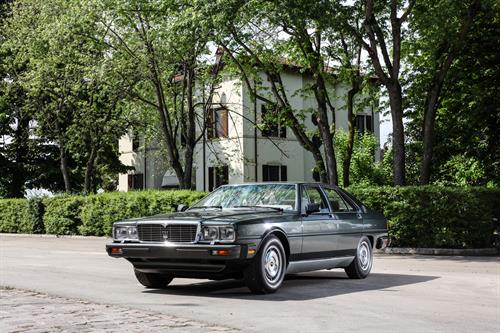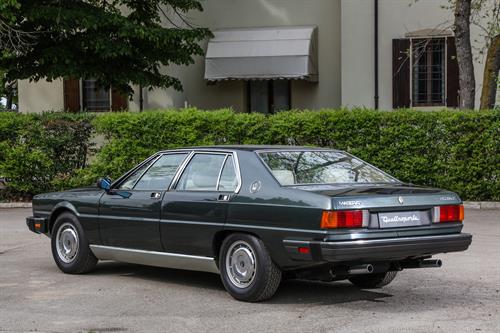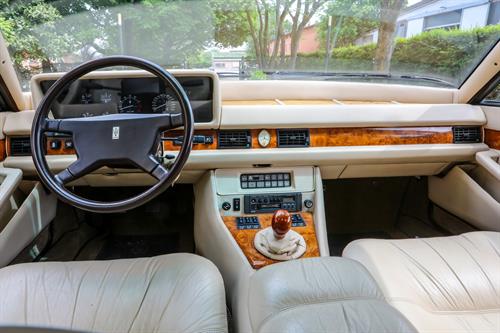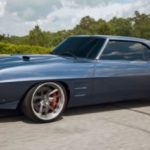Maserati Quattroporte History: 40 Years Down The Road
Maserati has always been known for cars of exceptional luxury, elegance and performance, demonstrated by the choice of Quattroporte models as the official cars of the Italian President. On 14 December 1979 the Maserati Quattroporte 3rd generation, in both automatic and manual gear-shift, was presented to Italian President Sandro Pertini. The ceremony, held at the Quirinal Palace in Rome, was attended by the Minister of Industry and Trade, the Rt Hon Antonio Bisaglia, and the CEO of Maserati, Alejandro de Tomaso.
The Maserati Quattroporte 3rd generation (1979), designed by Giorgetto Giugiaro, was the first completely new car to be designed during the de Tomaso management period (1976-1993), and featured lines inspired by the first, 1963, version of the Quattroporte, although with a less sporty and more formal personality. The Quattroporte 3rd generation was characterised by a luxurious and refined interior.

It was fitted with the V8 engine, in variants of 4.2 L with 255 hp and 4.9 L with 280 hp. The top speed was 220 km/h. The car remained on the market from 1979 until 1990, with a total of 2,145 units sold.
In 1986 the “Royale” version was launched: it was a restyling with interior upgrades including soft leather seats and lavish use of burr walnut on the dashboard and door panels. Other distinctive features were the radio telephone in the compartment between the front seats and the small stow-away folding table in the rear doors. The Quattroporte Royale was equipped with a powerful 4.9 L V8 engine with 300 hp and just 51 were built with this trim.
In 1982, the Italian President’s General Secretariat placed an order with Maserati for the construction of an armoured Quattroporte for the President’s use.

In 1983 the Modena firm supplied a Quattroporte, in “Dark Aquamarine” colour with beige velvet interior, to President Sandro Pertini, and it became his car of choice for institutional engagements.
One of the car’s original features was a large ashtray with pipe holder between the rear seats: this was requested by the President himself, and Maserati modified the rear bench to create it. The car also featured a bar cabinet, a telephone system, and an intercom for communication with people outside the car.
The car’s cabin was completely armoured and bullet-proof, with high-strength manganese steel plating. The windows were also armoured, 31 mm thick and made of polycarbonate with 4 electrically controlled windows.
The roof could be opened electrically above the rear seats to allow the President to stand up and greet crowds while on the move; a special handle was installed on the back of the right front seat to make this upright position safer and more comfortable.

In the 1980s, other famous personalities also chose the Quattroporte 3rd generation as their means of transport. Perhaps the best known was Modenese tenor Luciano Pavarotti; there are famous photographs of him in his Quattroporte outside La Scala in Milan.
Today, the Quattroporte is still the President of Italy’s official car: on 2 June this year, on Republic Day, the current President Sergio Mattarella used the Quattroporte 6th generation with exterior colour “Blu Istituzionale” specially created by Maserati. The car has interior trims in “Black Piano” (black lacquered wood) teamed with full-grain Pieno Fiore leather. Particular care was taken over the soundproofing of the cabin to ensure the upmost of comfort on board the car in all conditions of use. The rear of the console bears the official crest of the Italian Republic. The Quattroporte built for the Italian President was specifically modified to achieve the highest safety standards for cars intended for particular institutional uses.
The powerplant is the famous 530 hp bi-turbo V8 with peak torque of 650 Nm.
Quattroporte Presidential History
https://www.youtube.com/watch?v=qdeqydFQhgo






